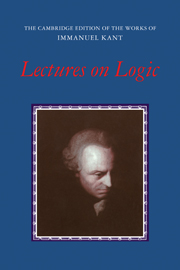Book contents
A - The Vienna logic
Published online by Cambridge University Press: 05 June 2012
Summary
Everything in the world happens according to rules[;] as we perceive this in the corporeal world, so do we find it even in the employment of our own powers, although we are not immediately conscious of the rules at all. We attain this employment through mere attempts, and from these very attempts, e.g., teaching someone to speak or to walk, we can derive the multitude of rules. In this way we can learn many rules by ourselves. Grammar consists of endless rules. On this aaccount a few have held language to be a divine inspiration, too. This much is certain, however, that all languages, in accordance with their first principles, can be reduced to a grammar. Moreover, grammar is a doctrine of the understanding, of course. For as our soul combines concepts, so must words also be combined. It is too abstract to be taught in school. Let us take only the abstract rules of the genere substantivo, etc. Let us investigate more closely these rules according to which our powers work. The understanding is the faculty of rules itself, and only the understanding can test these rules. By what rule does it do so? This is hard to discover, because if it errs itself, the understanding cannot indicate the correctness of the rules according to which it proceeds.
- Type
- Chapter
- Information
- Lectures on Logic , pp. 249 - 378Publisher: Cambridge University PressPrint publication year: 1992
- 3
- Cited by



